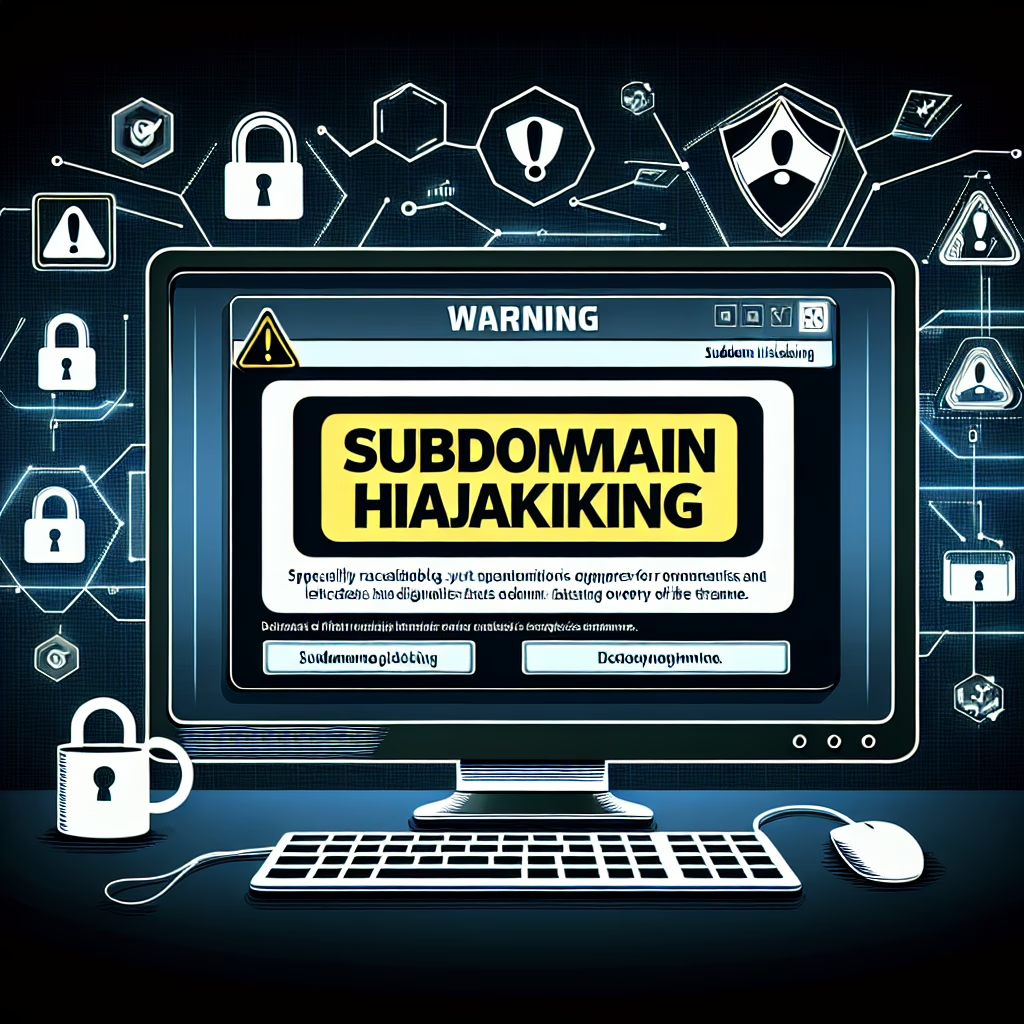In the whimsical world of the internet, where every click can lead to either a cat video or a malware nightmare, subdomain hijacking has become a surprisingly popular activity for cybercriminals. This tactic involves taking over the subdomains of well-known websites like Bose or Panasonic, which might make you think twice before clicking on that tempting link. In this article, we’ll explore how these hijackers operate and share some nifty tips to keep your digital life as safe as your grandma’s secret cookie recipe.
What is Subdomain Hijacking?
Subdomain hijacking is like that annoying friend who steals the spotlight at every party. It happens when hackers exploit vulnerabilities in a website’s domain setup to create malicious subdomains. For instance, if bose.example.com was supposed to be a safe haven for sound enthusiasts, it could turn into a dark alley where malware lurks.
Imagine clicking on a link that seems harmless, leading you to a site that appears legitimate but is actually run by cybercriminals. They can deploy all kinds of dastardly tactics, from phishing scams to installing malware on your device—just like that one time you accidentally downloaded an app that promised to teach you how to play the banjo.
How Do Criminals Hijack Subdomains?
To get into the nitty-gritty, criminals often look for websites that are poorly configured or have vulnerabilities in their DNS records. They can use various methods such as:
- DNS Spoofing: This is akin to someone sneaking into your house and changing your Wi-Fi password without you knowing. Hackers manipulate DNS records to redirect users from legitimate sites to their malicious subdomains.
- Domain Expiration: If the rightful owner forgets to renew their domain, it can be snatched up by cybercriminals faster than you can say “data breach.” Once they own it, they can create subdomains for all sorts of nefarious purposes.
- Misconfigured DNS Settings: Sometimes, website owners might accidentally leave the door wide open with incorrect settings, making it easy for hackers to stroll right in and set up camp.
Why Should You Care About Subdomain Hijacking?
If you’re thinking, “Why does this concern me?” think again! The impact of subdomain hijacking can be far-reaching. Victims might suffer data theft, identity fraud, or even have their devices compromised with malware. It’s like inviting a raccoon into your home—cute at first, but soon they’re rummaging through your trash and chewing on your shoes. This risk isn’t limited to individual users; businesses can suffer significant damage, both financially and reputationally, if their users are attacked through hijacked subdomains.
The good news? You can take steps to protect yourself! Here are some clever strategies:
Tips to Stay Safe from Malware in 2025
- Be Cautious with Links: Avoid clicking on links from unknown sources. If it looks fishy—like that email from your “long-lost relative” in Nigeria—don’t click!
- Check URL Carefully: Before entering any sensitive information, make sure the URL starts with “https://” and not “http://”. That little ‘s’ is your friend!
- Use Security Software: Invest in reputable security software that can detect malware and alert you about potential threats. Think of it as your personal bodyguard—without the sunglasses and earpiece.
- Enable Two-Factor Authentication: This adds an extra layer of protection by requiring not only your password but also something only you have access to—like your phone. It’s like needing both the key and the secret handshake to enter the club.
- Keep Software Updated: Regular updates can patch vulnerabilities that hackers love to exploit. So yes, those annoying reminders are there for a reason! Don’t ignore them!
The Bottom Line on Subdomain Hijacking
The digital landscape may seem daunting with threats like subdomain hijacking and malware, but being informed puts you ahead of the game. By practicing safe browsing habits and staying vigilant, you can dodge those pesky traps just like a pro dodges awkward small talk at parties.
Your online safety is paramount in 2025—so stay alert, stay informed, and always question that unsolicited link! Have you ever encountered subdomain hijacking or experienced any online security issues? Share your thoughts below!
For more information on the latest threats and how to protect your devices, check out these articles:
- Devious new ClickFix malware variant targets macOS, Android, and iOS using browser-based redirections
- Billions of stolen cookies are still for sale on the internet – here’s how to stay safe
- Thousands of Asus routers hacked to create a major botnet planting damaging malware
- Millions of users could fall for fake Facebook ad for a text-to-AI-video tool that is just malware
- Watch out – that antivirus website could be a fake, and infecting your PC with malware
Stay informed, stay secure!

